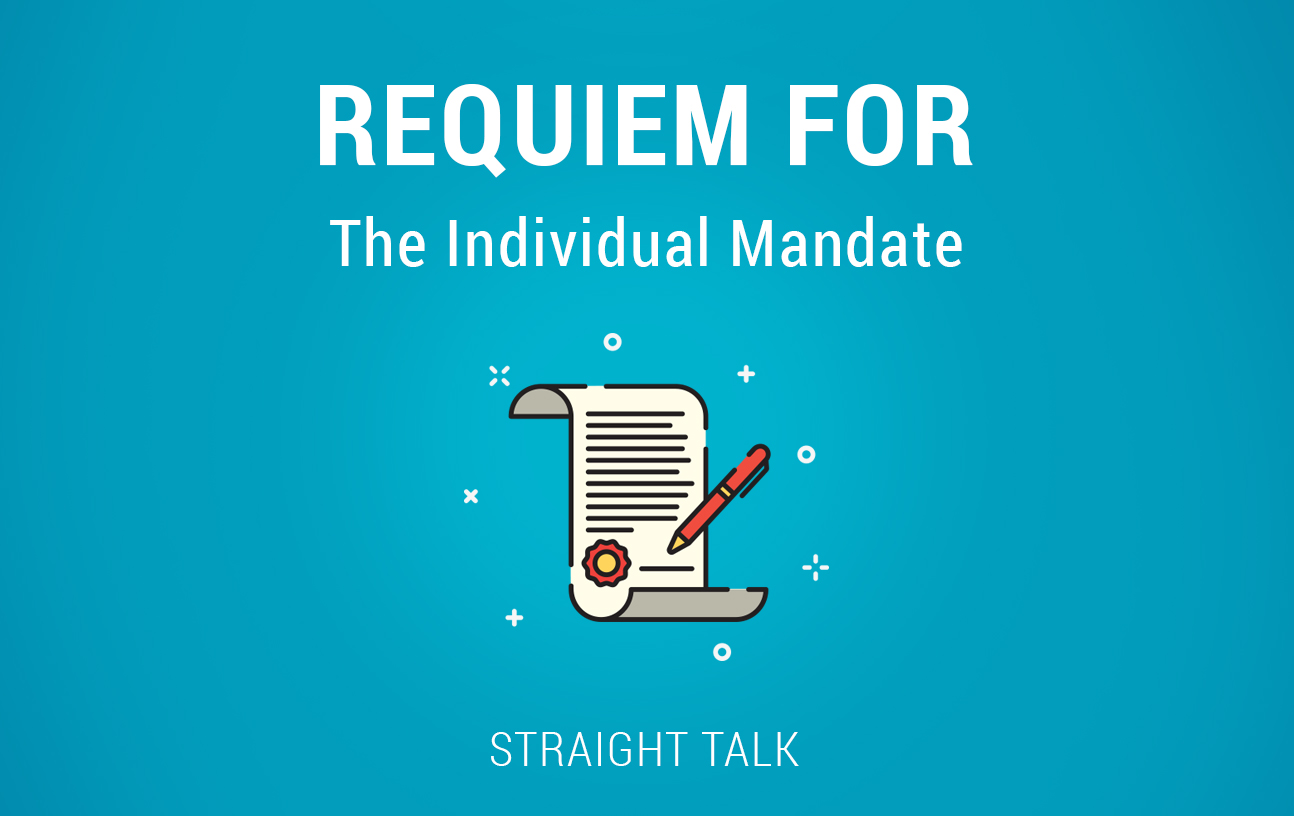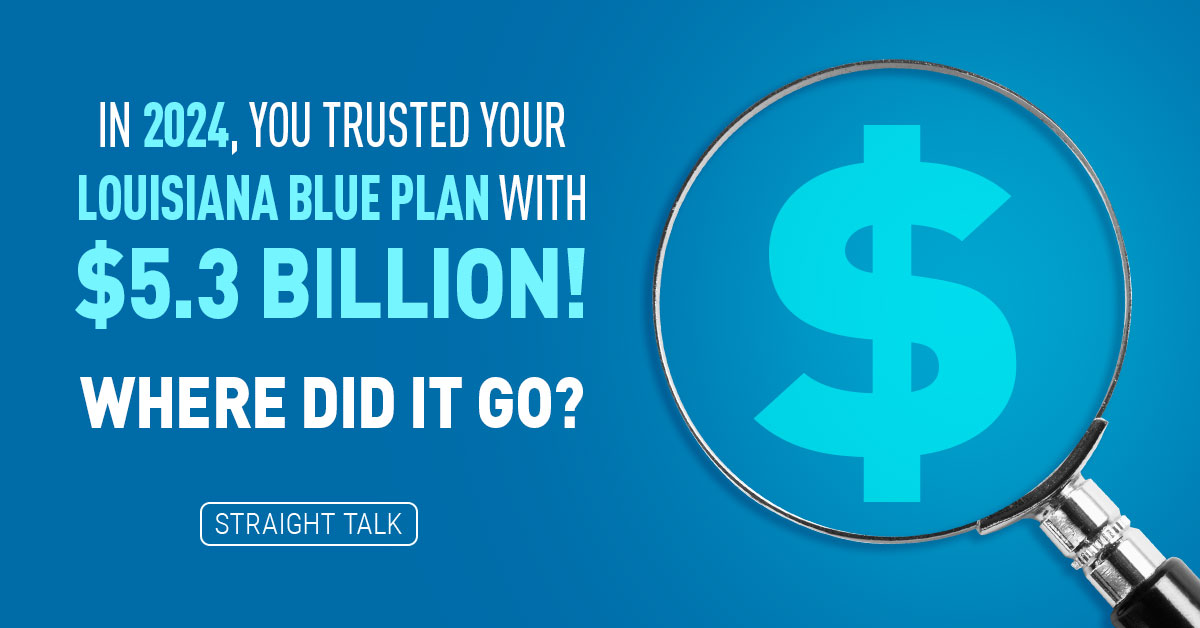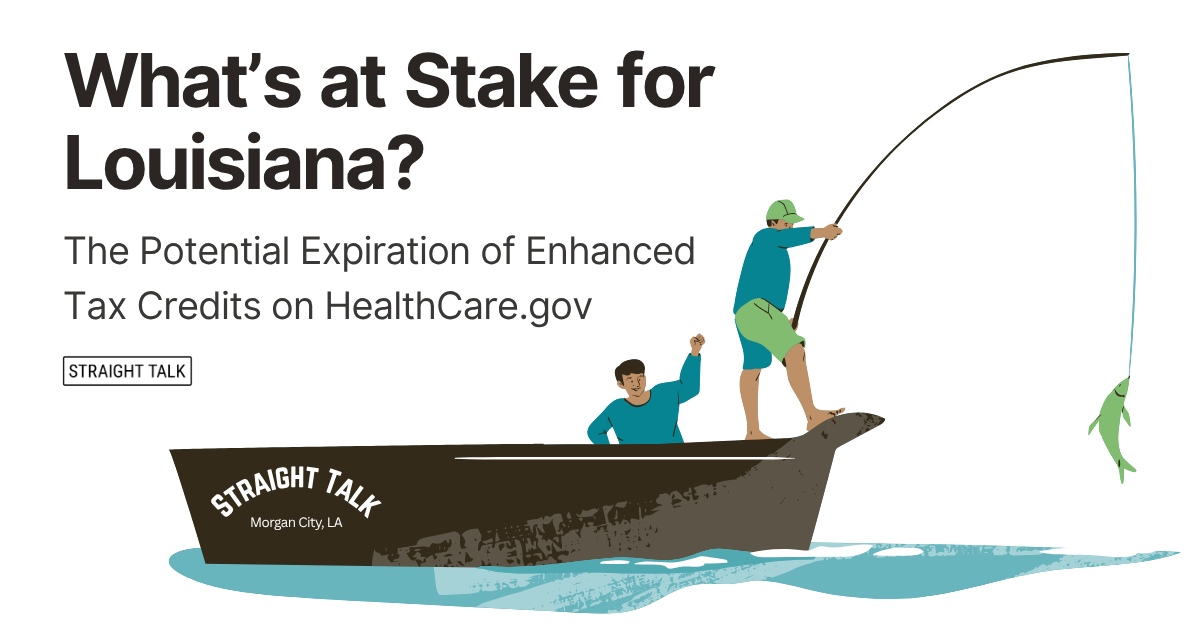Requiem for the Individual Mandate
I’ve always liked the word “requiem,” which the dictionary says means “a ceremony or remembrance of someone who has passed away.”
In this case, I’d like to tell you about the short life and sudden death of the individual health insurance mandate, an idea that could have gone a long way toward making today’s individual health insurance market stable and open to everyone regardless of how sick they are. Remember, this same market serves 12 to15 million people nationwide, including nearly 200,000 in Louisiana.
In the tax bill Congress passed last month, they reduced the fines in the Individual mandate to $0, effectively killing it.
I want to make one thing abundantly clear up front: the change of the penalties in the Individual Mandate from the current level to $0 does not happen until the 2019 tax year and is NOT retroactive. The penalties still apply for the 2018 tax year, so you are still at risk of having to pay a tax penalty if you do not have healthcare coverage for this year.
How Was this Concept of the Individual Mandate born?
Given the legal name “the Individual Responsibility Requirement,” the individual health insurance mandate was born on March 23, 2010, as a bouncing baby “nudge,” designed to encourage younger and healthier folks to purchase health insurance and keep it. (I’ve spoken at length about why those folks’ presence is critical to individual health insurance markets surviving.)
At the tender age of two years, many folks tried to render this mandate ineffective by challenging it in the U.S. Supreme Court. The mandate survived; now it had to perform, going into effect on Jan. 1, 2014.
Since that time, people on both sides of the political aisle have had many arguments about whether this toddler law was up to the challenges it would face, and if it would be capable of achieving everything its parents conceived it to do.
But, this new law was born with serious problems that would ultimately cripple its ability to do its job:
The mandate was too small
The penalty for not complying with the mandate was too small to be effective. For a single, 40-year-old person making less than $35,000 a year, the fine worked out to be $695 maximum, versus buying (individual) health insurance that cost roughly 10 times as much (by 2017), without a ton of federal assistance.
If you really didn’t feel like you needed health insurance (e.g. you were young and/or healthy), it was much cheaper to pay the fine than to actually buy insurance. Even if you had a very high income, say a single, 40-year-old person making $100,000 a year, the fine was still only about one-third of the cost of insurance in 2017. To top it off, the Internal Revenue Service (IRS) said it wouldn’t even collect the penalty UNLESS you had a refund, and they would take it out of there.
From birth, it was just too small to be effective, and this problem was never addressed by increasing the penalty or more strongly enforcing penalty payments.
The mandate was weakened over time, a lot
This rule was born with exceptions. There were originally only three, which didn’t weaken it very much at all. To go without buying insurance and avoid the penalty in 2014, you either had to be a registered member of an Indian tribe, low-income in a non-Medicaid expansion state, or a member of a healthcare sharing ministry.
Today, special interest adjustments have increased that exemption count to 28. Yes, as I write this, there are 28 different ways to get out of paying the penalty. This mandate has so many exemptions, you’d definitely want to get professional tax advice before you paid it.
The mandate became a flash point in an ugly divorce between the Parties
Imagine a law changing the way 18 percent of all the goods and services produced by the United States each year are managed and paid for. Then imagine this massive rule was passed without a single vote from the opposing party. That’s what the birth of the Affordable Care Act looked like. For many, the individual mandate was even more controversial than the ACA itself.
It survived on very shaky ground. Even when the Supreme Court said it was legal for the IRS to enforce it, they basically said, “Congress has the ability to tax anything it wants, and so this individual mandate is a tax on the ABSENCE of health insurance.”
This meant that a huge section of the population, the ones who have resented the ACA since day one, felt cheated by the law and fought very hard to make it go away. The battles over the mandate and the rest of the ACA have been fought in every election since 2010.
This component of the ACA was a political football from birth, which is not a good way to manage something as important as your health insurance.
So Mike, the history lesson is fine and all, but what does this thing going away mean for my rates?
If you get your health insurance through a job or through someone you’re related to who gets it through a job, odds are this will have no impact on what you pay through your employer health plan.
But, if you are buying your own health insurance, zeroing these fines in 2019 means another nudge to the young and healthy to stay insured has been pulled away. More young and healthy folks passing on health insurance will definitely drive up the costs in the individual health insurance pool. Definitely.
But how much will costs go up?
That’s the question, isn’t it? I’ve seen actuarial estimates as high as 10 percent or more each year (on top of other, usual rate increases that would occur anyway) through 2024. That’s without some sort of balancing action from Congress, like federal funding of higher-risk individual insurance pools. Because the mandate has already suffered since birth from all the things I mentioned above, I believe it’s possible the loss could have a smaller effect on rates. But, no one knows for sure.
We’ll just have to wait this one out and see how many younger, healthier people disappear from our risk pools in the individual market and how that affects rates. If Congress and the administration remove the individual mandate without a fully funded market stabilization package or other legislation with workable substitutes that encourage more people to sign up for coverage and balance the risk pool, premiums will likely go up, and there will be fewer choices.
Remember, this doesn’t go into effect until 2019. You still will be subject to the Individual Responsibility Requirement (mandate) through 2018.
Straight Talk on the individual mandate is: A sound policy idea that was weakened through political action until it was killed off. Rest in peace, individual mandate.





I bought health insurance way back when I was young and healthy because I knew that buying it *after* I got sick would not cover pre-existing conditions. That incentive has now been removed from the equation. Imagine if one could buy car insurance that would cover a wreck that had already occurred, or homeowner’s insurance that would cover a house that had burned down the day before. What sane person would then buy a policy before disaster occurred, even with a “fine” for not doing so? Duh! THIS is the problem with the ACA and why its rates skyrocketed.
What about the idea of buying across state lines?
Rates were already $283 for a $6500 deductible plan for a 23 year old male without a tax credit, in Louisiana, and that was without the mandate. As long as the funding mechanism for the plans stay the same (Federal government paying the bill), why would rates go up anymore than they already have been? If there was a higher penalty for NOT having insurance, this just creates more resentment among people who do not receive a tax credit and are paying outrageous costs for health insurance since this thing started.
JOHN! This is Mike Bertaut, healthcare Economist, BCBSLA
Thanks so much for reaching out. Excellent points and questions. Let me address them in the detail you deserve.
First, roughly 85% of all premiums people pay us go right back out the door in healthcare. That’s a federal standard, if we make too much extra money, we have to return it to our members as rebates. Of the 15% that doesn’t buy healthcare directly, another 4% pays taxes that are used to pay for healthcare in the Medicaid Expansion and Healthcare.gov. When you do the math, almost 90% of the money paid in buys healthcare either directly or indirectly for our members.
So, if any insurance company sells in Louisiana, to Louisiana residents, their rates are going to be heavily based on how much they have to spend on healthcare, and very little of that is determined by “economies of scale” or “administrative efficiency”. It’s all about unit costs of hospital stays, doctor visits, and the like.
If an out-of-state carrier comes to sell here, their rates/costs/profits are going to be determined by their leverage and negotiated rates with the healthcare providers IN LOUISIANA. Since Louisiana residents will still get their healthcare here. So, for an “across state lines” plan to give you any savings, they would have to cut a better deal than BCBSLA has, here in a state where we have over 1 million local members already. Ain’t happening. And the reason insurance companies don’t push for this rule ever, is they already know its an economic loser, else the big guys (United, Humana, Cigna, AETNA, etc) would be lobbying the heck out of DC to make it happen. They aren’t.
As far as rates go, in 2010 (before the ACA passed) I could sell a very comprehensive individual BC plan in Louisiana to a 23 year old in decent (not perfect) health for $110/month. And we did. Lots of them. And remember that the federal assistance people draw down to help them buy coverage doesn’t apply if you get offered ANY insurance at work (even really terrible coverage), or make more than about $46k/year as a single. That means that 23 year old rate today is about $300/month. But the average age in our individual risk pool is 10 years older than it should be. The young, the healthy, they are much less represented today in our individual market than they were in 2010. That’s driving rates up fast. A proper mandate would have kept them in the pool, and kept rates lower. It’s an age problem now.
50% of the people who buy individual policies from us this year qualify for $0 in federal help. Half. So rates matter.
Hope that helps! Great Questions!…mrb
This has been an eye opener especially the fact that the Individuals will still have to pay fines for not being in compliance with Individual Mandate in the year 2018.
Thanks for the article. I have a 29 year old who has a BCBS policy that has a monthly premium of almost $400 . When should I check for a policy with a lower premium? Thanks
Jan! Thanks for the question.
In general, if your 29-year-old has an individual health insurance policy, the market opens annually on November 1 and closes typically by December 15. During that period, you can purchase an individual policy without any regard to your current health status, habits, or medications you might be using. NO health questions asked.
If you want to shop sooner than that, you need to qualify for a “special enrollment period” which you must do through http://www.healthcare.gov. That process begins here: https://www.healthcare.gov/screener/.
Just fyi, I do not expect rates to go down anytime soon, but there are a wide range of polices available and federal assistance is there for many different income levels to help hold down premium costs for those making less than 400% of the federal poverty line (around $47k a year for a single).
Hope this helps!…mrb